|
JP Seabright (she/they) is a queer writer living in London. Their debut poetry pamphlet, Fragments from Before the Fall: An Anthology in Post-Anthropocene Poetry is published by Beir Bua Press. Their debut prose chapbook NO HOLDS BARRED is out early 2022 from Lupercalia Press, as is GenderFux, a collaborative poetry pamphlet, with Nine Pens Press.
Q: Can you tell me a bit about yourself and your writing? I’ve been writing on and off for a long time, although most of that time has been spent not writing, largely because I didn’t have confidence in my abilities, but also because I have the chronic neuroimmune disease ME/CFS which has meant at times I’ve been bedbound or housebound for long periods. Sometimes just reading is too difficult, let alone sitting up and typing at a laptop or writing by hand. But for the last 12 months or so during 2021, I feel as though I’ve been trying to make up for lost time, and now have over 100 poetry, prose and experimental pieces published. Q: Your debut poetry pamphlet was recently published, can you tell us a bit about it? Yes, Fragments from Before the Fall: An Anthology of Post-Anthropocene Poetry is a really long title for quite a short (44 pages) pamphlet, but I’m delighted that it’s found a perfect home with Beir Bua Press. It is a conceptual experimental work that uses erasure poetry as a means of commenting on the current climate crisis. The difference is that the erased poetry is my own and the book is framed as if it’s an anthology of ‘proletarian poetry’ written in the current era and coming few years, but found in the future by an Activist Archivist who has discovered these fragments and is trying to discover what happened to humanity ‘before the Fall’; the Fall in this case being a catastrophic environmental collapse. Q: What’s your least favourite part of the writing process? Editing prose probably, mainly because it takes time, but also distance. You really do need to look at it afresh after a while, and I either haven’t got the time, or the patience (or probably both!). Something to work on... Q: How would you describe your writing style? Are you a plotter or a pantser? Do you write everyday or whenever the moment strikes you? I wish I could write everyday! But in addition to a busy part-time job (I work for an international humanitarian medical organisation) I also have a young daughter and a chronic illness to navigate, so dedicated writing time is pretty near impossible, and I just fit it in whenever I can. Sometimes this is in between work meetings, or the middle of the night! I used to be purely a pantser writer due to time constraints, now I’m a bit of both. For my work in progress novel it’s all outlined, for shorter prose and poetry I simply go with the flow. I’ve never done any creative writing courses, it’s all self-taught, and due to time and health constraints, it’s difficult for me to even attend online workshops, so I’m generally just making it all up as I go along – then hoping that someone else likes it! Q: What advice would you give a new writer? Keep going. Keep writing, it’s an art and craft that needs practice, like anything else. Seek help and support, the Twitter Writing community have kept be sane and kept me going, and made me feel that my writing is worth pursuing this year. I may well have given up without them. Find your writing tribe, as well as your audience – it will be out there somewhere. Q: What inspires you? Everything and anything. Often random news articles and sciencey facts (quantum physics, archaic cultures, that sort of thing) but also a lot of other art and music. (In fact I’ve just completed another pamphlet out on submission which is all in response to other artists and creators – Mark Rothko, William S. Burroughs, Sappho, Hilma af Klint, Anna Kavan, James Joyce, Nick Drake, Derek Jarman, etc). I also write a lot from my own personal experience, and particuarly enjoy a speculative twist to real events. But I’m also inspired by the work of many new writers and creatives that I’ve discovered this year, simply by writing and submitting more myself, and through the Twitter community. I won’t attempt to reel off a list of names since it will be a very long list, and undoubtedly miss some brilliant people out. In particular, the writing relationships I’ve forged through my involvement with Full House Literary Magazine this year have been the most significant, and for which I feel hugely blessed. Q: What are you working on next? I’ve spent most of this year writing poetry, though I still wouldn’t consider myself a poet, not knowing very much at all about the craft in practice. It’s been a great way to fit writing into the short snippets of time I have, and to get stuff out there, and I’ve been lucky to have my debut pamphlet published this year and another collaborative one (written with Jem Henderson and Jonathan Kinsman) being published by Nine Pens Press in Spring 2022. There’s also a prose chapbook of short CNF stories due out sometime early 2022 from the US-based published Lupercalia Press. But what I really want to focus on (and finish!) in 2022 is my WiP novel. Q: Where can we find out more about you and/or your book? Fragments from Before the Fall: An Anthology of Post-Anthropocene Poetry is available direct from the publisher Beir Bua Press https://beirbuapress.com/2021/11/27/fragments-from-before-the-fall-jp-seabright/ Most of my published work is linked from my website https://jpseabright.com/ and I can be found frequently procrastinating or distracting myself from writing on Twitter @errormessage
1 Comment
Leia Butler, Full House Lit Mag editor, tells us about her new interactive poetry collection12/11/2021 Leia loves experimental poetry and enjoys work that is visually exciting and boldly brilliant. She has a BA in English Literature and Creative Writing from the University of East Anglia. She is a winner of the Streetcake Experimental Poetry prize (2019), and her work also appears in Re-side, Beir Bua, and on The Babel Tower Notice Board. Her first poetry collection ‘Tear and Share’ is available at Broken Sleep Books. She is currently also exploring sound and object work. Q: Can you tell me a bit about your writing background? What made you want to be a writer? I've always been interested in words and storytelling, and it was always an important way of me being creative, but I didn't start playing around with my writing until my last year of 6th form and first year of university. It was then that I found streetcake's experimental writing prize and entered a piece called 'Word Ladder', which ended up winning first place in my category. After receiving mentoring from the wonderful Sascha Akhtar and encouragement from the streetcake crew, I really found my writing style. I then began doing lots more reading and research into poets that were doing some exciting things, and I started taking my writing seriously. Q: Your new pamphlet is very unique and innovative. Can you tell me a bit more about your influences and what made you want to create a collection that people can literally tear and share? I started writing Tear and Share as part of my dissertation in my final year of university last year. Back in 2019, Sascha and I had been chatting about different forms and discussing how cool something like a tear away perforated sketch book could be, and I really wanted to play around with this ripping element. My collection is centred around a COVID-19 lockdown landscape, a time that was lonely, heart-breaking, and incredibly difficult. There were so many kinds of separation between people everywhere and so, so much distance. My collection is themed around that sense of loneliness and the pamphlet encourages readers to rip out the pages as part of a therapeutic process to take back control over the difficult times. Readers have the authority to rip out and do whatever they want with the pages: burn them, tear them into pieces, share them/mail them to/with a friend. Once you get past it feeling a bit unnatural to rip pages out of a book, it becomes a really interesting experience. I used one of the pages as a coaster and repeatedly put my mug down on it over a period of time, to replicate the duplication of how everyday looked the same for me in lockdown. Every page has a QR code where you can upload pictures, and I'd really love to see people getting creative and manipulating the pages! Q: Can you tell me about any of the current projects you're working on? I'm currently working on a few things! One is a collaborative sound project with some really exciting people. Pieces will be published on a separate site called the audio experiments and I'm so looking forward to sharing some of the projects on there. I'm also working on some object pieces and a collection around my personal deepest fears and how it impacts every part of my life. Q: You also run the amazing Full House Lit Mag and podcast. What's your favourite thing about running a mag and doing a podcast? Running Full House alongside the brilliant JP Seabright, has just been the best thing for me. Through the magazine and the podcast, I get to meet and talk to so many wonderful people and I've learnt so much about writing. My favourite thing is when we get to put the spotlight on people, whether through publishing them, speaking to them as a guest, or shouting out their piece on our podcast. I also love working with our team of volunteers who give so much to Full House, we'd be lost without them. You can find the FH website here if you are interested! https://www.fullhouseliterary.com/ Q: Who are some of your favourite writers who are writing currently? So, SO many! Immediately springing to mind are JP Seabright, Claire Hampton, Kinneson Lalor, Nóra Blascsók, E. J. Coates, Ollie Charles, Richard Capener, Briony Hughes, and yourself of course. Other wonderful creators would include James Knight, Astra Papachristodoulou, Aaron Kent, Chris Kerr, Helen Bowie, Michelle Moloney King, Shiksha Dheda, Mandira Pattnaik and essentially everyone I follow on Twitter! My timeline always fills me with such joy. Q: And just for fun - which writer would you have a cuppa with if you could? I couldn't pick one! Let's just have a giant tea party with everyone. Cake on me! You can view more of Leia's work on her website (https://leiabutler.com/) Some images for Tear and Share
Elizabeth M Castillo is a British-Mauritian poet, writer, indie-press promoter. She lives in Paris with her family and two cats, where she writes a variety of different things under a variety of pen names. In her writing Elizabeth explores themes of race & ethnicity, motherhood, womanhood, language, love, loss and grief, and a touch of magical realism. She has words in, or upcoming in Selcouth Station Press, Pollux Journal, Revista Purgante, Feral Poetry, Streetcake Magazine, Fevers of the Mind Press, Bandit Fiction, Epoch Press, among others. Her bilingual, debut collection “Cajoncito: Poems on Love, Loss, y Otras Locuras” is available for preorder from her website/available on Amazon. You can connect with her on Twitter and IG at @EMCWritesPoetry.
Q: Your collection deals with a lot – loss, regret, heartbreak, love, resilience and so much more. Did you find it easy to write about these subjects? Are there any subjects you find too difficult to write about? It does, doesn’t it? I was afraid that there would be too much of the same thing when putting the poems together, but coming back to it I realise that “Cajoncito” covers more ground than I originally thought— and not just because the poems jump from the Congo river to the Andes to Paris via Mauritius and back again! More than easy, I found it necessary to write about these things— most of these poems were sort sitting at the tip of my tongue, so-to-speak. The vast majority of them just fell out of me, and ended up going through very little editing. Some of the poems I edited for weeks only to bring them back to where they were to begin with! That was the original idea behind the title of the collection: “Cajoncito” is the spanish word for “little drawer,” and these poems were about experiences and emotions that needed to be acknowledged and felt, before packing them away somewhere for safekeeping, and cracking on with life. Strangely enough I do find writing about Mauritius, the country I grew up in, very difficult, though if you were to look at my life you wouldn’t guess living there had been a traumatic experience. Interestingly, now that Cajoncito is finished, I'm slowly working on a collection of pieces (some experimental!) about Mauritius and my relationship with the concept of “home.” Other than that, every subject is fair game. And I always hope that when writing about grief, miscarriage, depression or otherwise, perhaps someone who is also suffering can find comfort or company in my words. Q: In your collection, you have a translation of each piece. How important is it for you to write in different language, or a mixture of languages? How do you decide which language to use or does it happen naturally when you sit down to write? It might sound cheesy but the muse totally decides! Spanish is my fourth language, so it was as much as surprise to me as anyone the first time an entire poem came out of me in Spanish (it was De Repente/Suddenly if anyone is interested…) Some pieces appear entirely in one language, others will, like me, call on a word or phrase in another language simply because I just can’t remember it in English. Anyone who knows me in person knows I jump from language to language when speaking, so I also think it’s only natural these poems— that are so personal and so very close to me— reflect that aspect of my voice. Q: Your collection is self-published. Can you tell us a bit about this process and how you found it? Which parts were easy/difficult? I chose to self-publish for two reasons. The first being that I had a very clear vision for this collection- what I wanted to do with it, how I wanted it to look, how far I wanted it to reach. But also because I doubted I would find a publisher that would agree to leave my little Cajoncito as I imagined it— who would embrace the multiple languages, themes and references. I actually did submit the manuscript to about 5 publishing houses and presses. Two declined, one never got back to me, and another expressed interest but wanted less Spanish as they felt it might “alienate” readers. This was before I decided to translate all the poems in the collection. At that point Spanish poems made up about 30% of the collection. In the end I withdrew my submission from the last press, and decided to take the leap and self-publish. It was also following a conversation with another traditionally published poet where she told me that X amount of book sales was considered a successful run in independent press circles. I remember thinking to myself “I reckon I can sell that many!” Self-publishing in itself is easy enough- there are so many platforms and companies to choose from. And if you have some money to invest, blog tours and other promo can also be arranged. The most challenging aspect for me is getting word out there about the book. I live in Paris, and my book is in English and Spanish, so I don’t have much by way of local audience for my work. Local poetry readings are few and far between, and almost entirely in French. None of my friends or family are particularly literary, or even read poetry, so I’m completely reliant on social media connections and writing friends across the world. Luckily I’ve managed to build quite a solid network, and my books will be for sale in some independent book stores in Mexico, Spain and hopefully the UK. What I didn’t expect is to feel so burned out by the whole process. It’s a lot to be your own editor, publisher, agent, publicist, graphic designer and social media manager. And all of this part-time as, like most of us writing mothers, I have a household to run, children to homeschool, and an actual job to do in order to put food on the table. I was really looking forward to promoting my book once it was ready for preorder, I had 145376761 ideas, but sometimes it feels as though I’ve poured so much into the book so far, I don’t have much left to give anymore! Q: What’s your least favourite part of the writing process? I can’t stand the admin! I love connecting with new people on social media, but learning to bend the algorithms and be strategic with posting is exhausting. I love supporting indie literary publications, but the submissions process is so draining! I wish I could write my poems and throw them out the window and they could make their way to the readers... Q: What advice would you give a new writer? Just sit down and write the thing. A terrible first draft is better than no draft. Read in the genre you want to write. Oh, and be kind, the industry (and the world) needs more of that. Q: Where can we find out more about you and/or your collection? You can connect with me on Twitter or Instagram as @EMCWritesPoetry, on Facebook as Elizabeth M. Castillo, email me at emcwritespoetry@gmail.com, or sign up to my mailing list www.elizabethmcastillo.com. My collection is available for preorder/sale in both paperback and EBook/PDF from my website www.elizabethmcastillo.com/coming-soon  I am excited to announce that my new poetry collection, Fanny B. Mine, will be out with Beir Bua Press in October 2021! Fanny B. Mine is an exploration of John Keat's and Fanny Brawne's relationship through a modern-day lens, i.e.: it examines what would happen if they met today. It's an experimental series of responses, interpretations, visual poetry and letters. It was a lot of fun to write and I love the journey that unfolds through the collection. As a side note, I have huge respect for Keats and he was a big influence for me as a young writer growing up next to Hampstead Heath. In English class, I would look over the Heath (which was next to my school) and think about Keats wandering around and writing about what he saw. It was really inspiring but at the same time, when I read the letters he sent Fanny Brawne and some she wrote after his death, I wondered, what would happen if they met in the present time? Afric McGlinchey is a poet, editor and reviewer based in West Cork. Her collections are The lucky star of hidden things and Ghost of the Fisher Cat, (Salmon Poetry), both with Italian translations published by L’Arcolaio. A surrealist pamphlet, Invisible Insane (SurVision) appeared in 2019. Poems have recently appeared in The Irish Times, Prelude, The Stinging Fly, Poetry Ireland Review, Poetry International, the anthology, Days of Clear Light, and the SHOp anthology. Winner of a Hennessy and other awards, Afric received an Arts Council Literature Bursary to work on a hybrid auto-fictional childhood memoir, Tied to the Wind, published by Broken Sleep Books on the 31st August 2021.
Q: Can you tell me a bit about yourself and your writing? I live with my partner, an artist and poet, by the sea in a remote part of West Cork. I’m a book editor, reviewer, workshop facilitator and mentor. So my life is all about the written word. When I’m not working, I’m reading other stuff and writing, walking and swimming. Lockdown has been easy for us, as not much about our life has changed. I don’t have a set rhythm or ritual to my writing life, although I’m more likely to write in the morning. In each of my books, I’m trying something new in terms of style. I’ve gone from confessional free verse to experimenting with forms, to persona poems, or non-linear, or surrealist, and now, micro-stories or prose poems. Of course, one’s ‘voice’ is always going to be identifiable, like handwriting. No getting away from that! Many poets and writers are strong on place, on roots. Because of my upbringing, which involved eighteen moves in eighteen years, the only place I feel a real sense of community is within the writing community, and that is a global one, very disparate in terms of allegiances, cultures, religion, race, sexual preferences etc. But we share a love of the word, the creative act, and that binds us. We are also bound together — humanity and every living thing — by the happenings on our planet. I am interested in cause and effect, in plurality and nuances, in patterns and fractures, particularly around eco-issues and migration. I am interested in finding connections where they might not initially be apparent. In terms of process, I am currently experimenting with linearity, chronology and also with word choice. I love juxtaposing unexpected images or phrases, letting the reader’s mind leap imaginatively and create their own resonances. For me as a poet, epiphanies have exploded into my mind using this process. But I have to consider the reader too, and I know that to go too far down this rabbit hole will alienate readers. So, I focus on a coherent narrative, even if that narrative is at times oblique, or, as Emily Dickinson would put it, 'slant'. My first collection was translated into Italian and studied at Bologna as part of a series on the study of a Poetics of Dislocation. Although the term suggests a fracture of sorts, I prefer to perceive it as dynamic, metamorphic, transitional. It’s also a warning — the earth itself is in a state of dislocation. We are at a volatile stage, and anything might happen at any moment. It is best to be poised, like a wild creature, ready to adapt to whatever new situation we find ourselves in. Q: Which book/s have you read at least 3 times? Well, I’ve read King Lear – my favourite Shakespeare play – at least three times, but as that was for study, maybe it doesn’t count? Sylvia Plath’s Ariel poems too. Dylan Thomas’s Under Milk Wood. T.S. Eliot’s The Wasteland. Oh, and Amy Leach’s Things that Are. But I am such a bibliophile that usually I get to read a book only once or twice, because there are so many tantalizing others queued up, waiting. Q: Is there a writer you would love to meet? Who and why? Impossible question! So many writers, so many reasons! If I could choose someone no longer alive, maybe James Joyce, because I’m currently re-reading Ulysses, so he’s in my head at the moment. I’ve also read Nuala O’Connor’s Nora, Edna O’Brien’s James and Nora, and The Joyce Girl (about Lucia) by Annabel Abbs, and find the Joyce family, and their lives, fascinating. He’s a complex character, probably fun when he was drinking. Even though he was undoubtedly selfish, his self-belief and his gigantic vision, intellect and ambition were spectacular – as well as his ability to win patrons, his courage, impulsiveness and sense of adventure, and not least, his ability to absorb languages the way you absorb a tan in the sunshine. Joyce also reminds me of my charismatic, alcoholic, musical, self-absorbed, adventurous father. I’d feel at home with him. A contemporary writer would be Anne Carson, because of her ‘inscrutable brilliance’ as The New York Times put it. Her work is so exciting – there’s just no one else like her. And she has a sense of humour too and, I feel, a generosity of spirit. I feel I could learn so much from her. Q: Which fictional character would you invite for a drink and what do you think you’d discuss? I’d like to invite both Sugar and Agnes from Michel Faber’s The Crimson Petal and the White. It was agony reading about Agnes’s ongoing ignorance of sexual matters, even the basic facts of life such as periods, and I’d love to have a heart-to-heart with both of them about being women in those Victorian times, sharing with them how it is these days, discussing life as a woman then and now. Q: How would you describe your writing style? Are you a plotter or a pantser? Do you write every day or whenever the moment strikes you? A pantser. I binge write at first. Once the bones of a book are in place though, strategy comes into it. Q: What advice would you give a new writer? Seek out a mentor. Make friends with your local librarian, and request books. Read, read, read, not just Irish, but international writers, and outside your own genre too. Only submit poems you’re proud of, to journals you admire (if you can’t afford to subscribe to them, you can access them in good libraries, or online). Always wait at least a month after writing a poem before sending it anywhere, because hopefully you’ll continue editing and improving it. Submit regularly to New Irish Writing and enter competitions. Q: What inspires you? The sea. Poetry. Swimming. The natural world. Poetry. Dinner party conversations with good friends. Music. Art. Movies. Poetry. New places. Flying. Love. Reading. Poetry! Q: Tell us about your latest work. It’s called Tied to the Wind. It’s an auto-fictional account of my nomadic childhood. My family moved back and forth between Ireland and Southern Africa, so it was difficult to attach, latch on, to have a sense of belonging. I had no sense of myself as a person, which is one of the reasons I wrote it. I wanted to re-enter that childhood space, to relive those moments. So I wrote in the present tense, with no advantage of enlightened adult hindsight. I wanted to meet the child I was, get a sense of her and her partial perceptions. The I, in the story, is called Itosha. That distancing helped. The constant moving triggered a sense of destabilisation, exacerbated by my father’s alcoholism, by the racism I encountered in pre-independent Zimbabwe, the war and the conflicts of complicit colonial privilege. Interwoven into the narrative are flash-forward lyric fragments about my decision to undertake a skydive, despite being scared witless of heights. I wanted to shock everyone, including myself, to be an agent in my own life. And that impulsive act backfires. But I do learn something too. I intended the narrative to be in the form of prose poems. Of course, it depends on how you define a prose poem. I read the Penguin Book of the Prose Poem, where the diversity is exhilarating. I also read Elizabeth Smart’s By Grand Central Station I Sat Down and Wept – a few times. My story isn’t as lyrically ‘heightened’ as that. For the sake of this book, I define a prose poem as having a certain compression, an atmosphere, as being its own entity. Q: Where can we find out more about you and/or your book? Here’s a link to Afric's book on the Broken Sleep Books website, where you can order it: https://www.brokensleepbooks.com/product-page/afric-mcglinchey-tied-to-the-wind And here’s a link to her website: www.africmcglinchey.com Twitter handle: @itosha Karmen Špiljak is a Slovenian-Belgian writer with a taste for dark and twisty tales. Her short fiction has been awarded and anthologised. Her as yet unpublished thriller was shortlisted and received an honourable mention on 'The Black Spring Crime Fiction Prize 2020. Karmen's book, Add Cyanide to Taste, will come out in September, but it is available for pre-order on all platforms.
Q: Can you tell me a bit about yourself and your writing? When I first started to write poems, at the age of six or seven, my dad thought I was copying the text from a book. Eager to prove myself, I wrote a poem about him. I included enough details about my dad, so there could be no mistake who’d written it. My teacher was excited and must have sent it off to a local newspaper. A week or so later, everyone could read about my dad’s afternoon meeting with the sofa and the newspaper, his favourite pastime. He was embarrassed, but also a bit proud and never doubted my writing skills again. I continued to write and got encouraging feedback from the local papers. In my teens, I sent a few stories to a new magazine that was looking for them, and they published them all. Not only that, I even got paid. Of course at that point, I considered this a neat way to earn some pocket money, not something that could become my career. The writers I used to learn about were men who drank a lot, wrote about misery and died in poverty. At the time, there were no writing schools or courses in Slovenia and writing wasn’t considered ‘a real job’. I didn’t write much while studying and was surprised to discover a familiar story in my favourite political magazine, Mladina. The more I read, the more I realised this was my story, signed under someone else’s name. A young student had plagiarised it and been shortlisted in some contest. I was both flattered and outraged. Thankfully, it was easy to prove authorship as the story had also been published under my name some years ago. This strange event made me think that maybe I did have something going on there. When I got into a screenplay writing course, I was surprised how much there was to writing. Up till then, I’d pretty much been winging it. There was all this science about character development and plot, suspense and Deus Ex Machina, things I was completely oblivious about. It felt like entering a different universe. I enjoyed studying the craft and wrote a feature film screenplay. The work gave me my first serious income as a writer, as it was acquired by the Film Foundation of Slovenia via a tender. It still took me years before I admitted to myself that no job ever made me as happy or gave me the same fulfilment as writing did. The moment I got a chance to follow my husband as a trailing spouse, I decided to give my writing a chance. He’s been very supportive from the start and is still the only person who reads everything I write. I never doubted the choice. Still, it was nice to get a pat on the back when my short story won a dystopian contest in The Writing Magazine. Looking back, I wish I’d trusted my instincts earlier on. Q: Which book/s have you read at least 3 times? The only book I’ve read three times is Stephen King’s ‘On Writing’. I’ve read many books twice and have several pegged down for a re-read, but the allure of a new story tends to win on my ‘to read’ pile’. There’s never enough time to read everything I want. Q: What’s your least favourite part of the writing process? The waiting. I used to really hate it, but I’ve learned to accept that it’s an important part of the process and that it helps whip my stories into the best possible shape. I tend to put down my novels for at least two months after each draft. For short stories, a week or two can be enough. There are a few stubborn stories that take years to finish, but I’ve come to terms with the fact that there’s nothing I can do to speed up the process. In the end, it’s the waiting that helps them develop and ripen. Q: Which fictional character would you invite for a drink and what do you think you’d discuss? Hercule Poirot, no doubt. I’d love to pick his little grey cells over lunch or dinner, a ten-course meal at least so we’d have enough time to dive into the nitty-gritty of crime solving. Hercule Poirot is one of my favourite fictional characters. I have to admit, though, that I always imagine him as David Suchet. Q: How would you describe your writing style? Are you a plotter or a pantser? Do you write everyday or whenever the moment strikes you? I’m a pantser. I love to know where the story is headed, but I also enjoy the sense of discovery while writing. That’s why I love writing short fiction. With short stories, I’m happy to explore the ideas without any planning. This doesn’t quite work for my novels, though. I’ve tried and ended up with a convoluted mess that needed tonnes of editing. Since I don’t want to get bored or stuck in routines, I like to try new things with every novel. For the latest one, I pinned down the key events, then built the story from that. Sometimes I use plotting schemes such as ‘Save the Cat’ or ‘Story Engineering’ to fill in the blanks but mostly to double-check the story structure when things don’t feel right. As I write most days, it’s easy to keep the story flowing. If I get a good idea, I’ll gladly abandon the plan and take a detour. Q: What advice would you give a new writer? Join a writing group. So much of writing requires peace and solitude that it’s easy to get stuck in your own head. I’ve never met a writer who never doubted themselves. Self-criticism and fear can hold you back. Being a part of a writing community can boost your confidence and skills. For me, joining a writing group made a massive difference. Q: Which words/phrases do you overuse in your writing? Just, still, but, also. Also, though. Q: Tell us about your latest work. My new book is a collection of culinary noir called ‘Add Cyanide to Taste’. I love culinary fiction and didn’t really know it was a thing, when I started to write this book. Since my stories tend to be on the dark side, I decided to add the food element and see how many original ideas I could come up with. Many, as it turned out, and they keep on coming. I couldn’t include them all, so I chose my favourite ones: a mysterious restaurant with an unusual business model, a remote mountain village with a sinister cook, a family business that depends on a cursed cake, a friendly dinner between neighbours taking a dark turn. There are many more. Because I didn’t want to limit the book to short stories only, I included a few recipes for dishes featured in the story. Rest assured that none involve cursed dishes or cyanide. Q: Where can we find out more about you and/or your book? On my website, where there are also a few details about me and my work. I’m always happy to connect with people via Twitter and Instagram or chat about writing. |
Short reviews of books I've enjoyed and author interviews Archives
January 2022
Categories |
Member of the Society of Authors
Copyright © 2019 · All Rights Reserved · Nikki Dudley
Proudly powered by Weebly
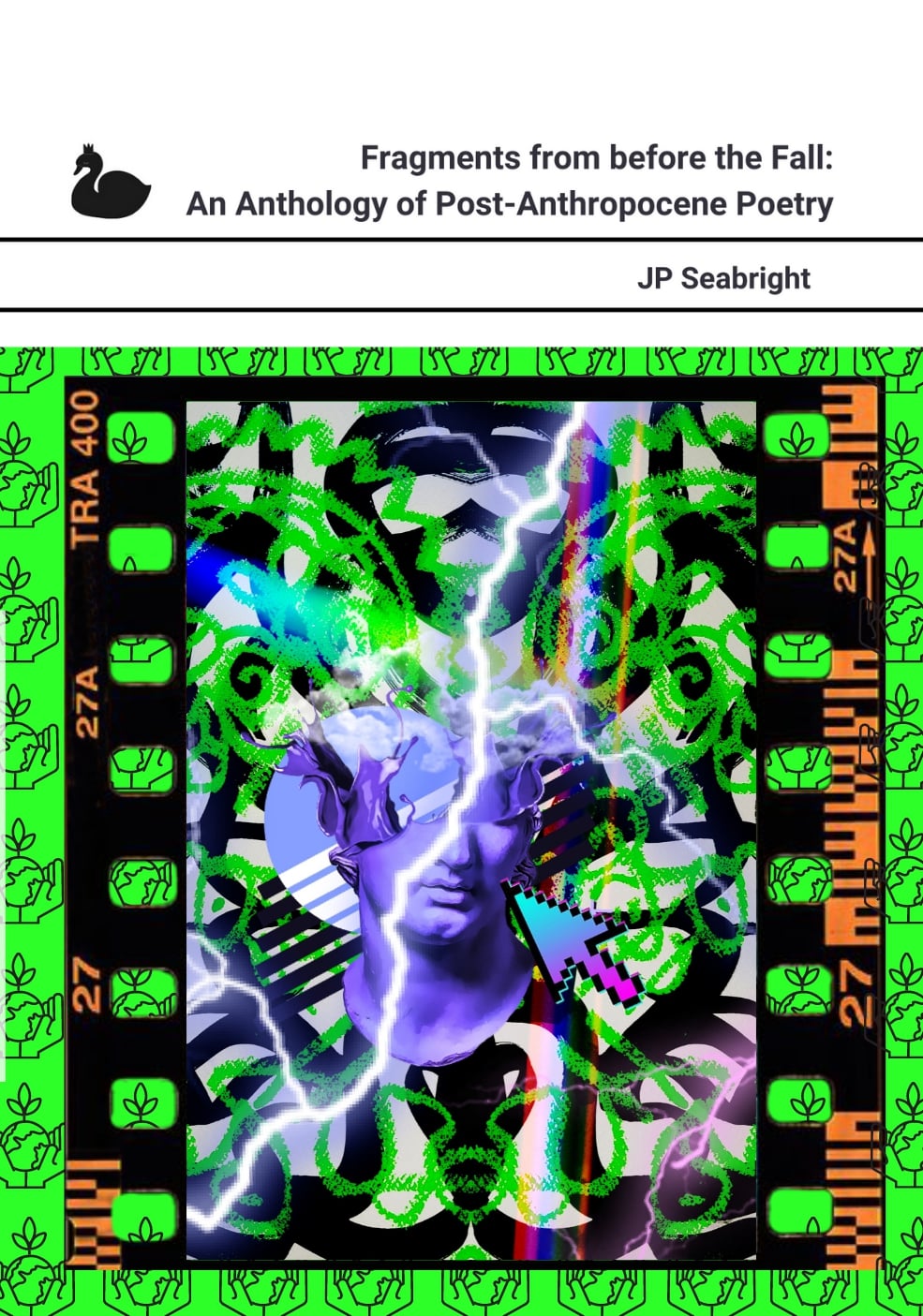

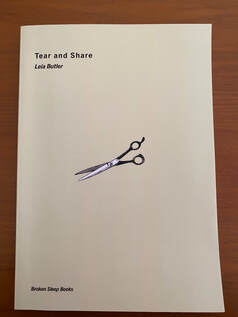

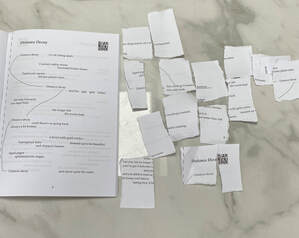
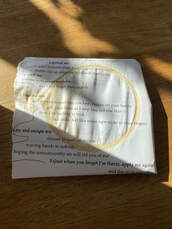

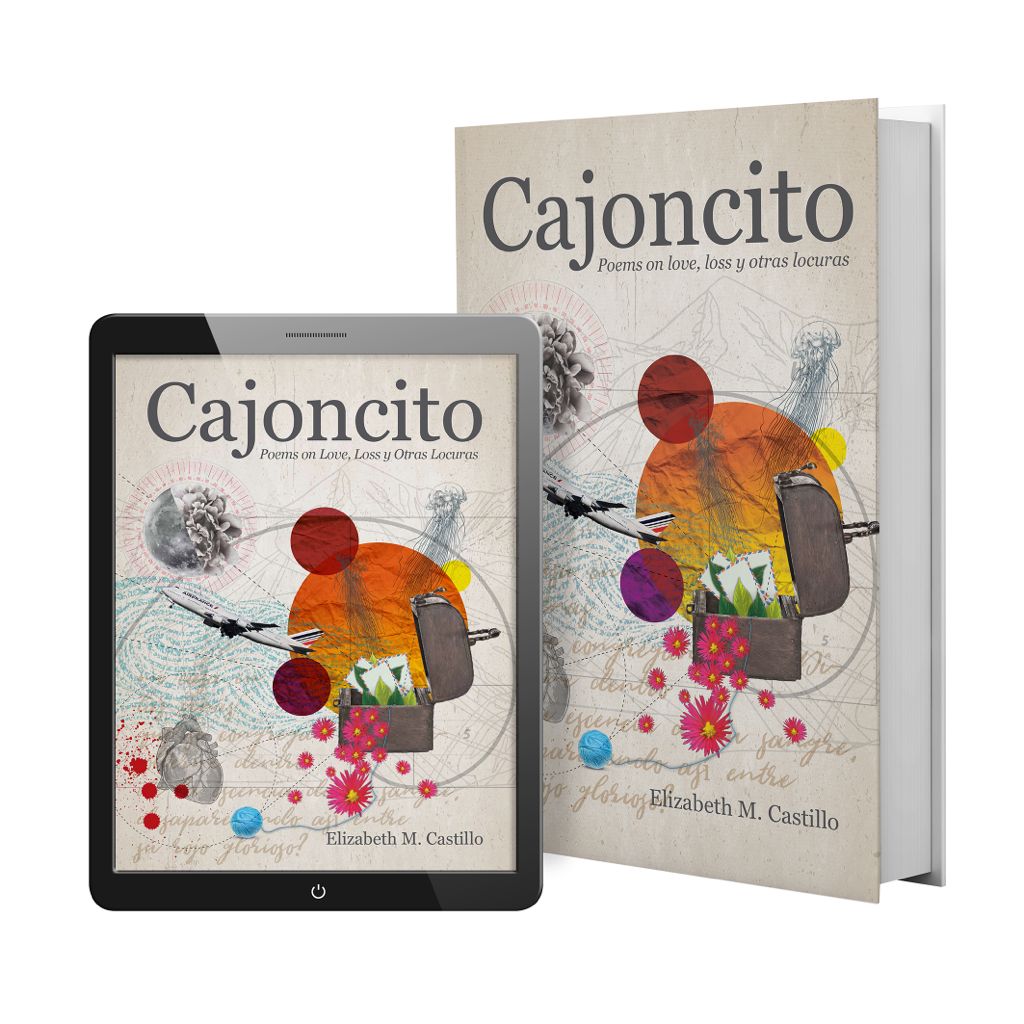

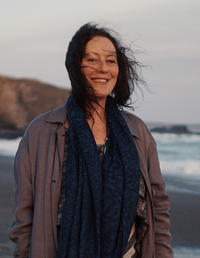
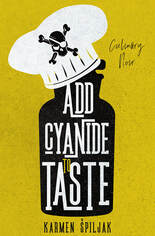

 RSS Feed
RSS Feed